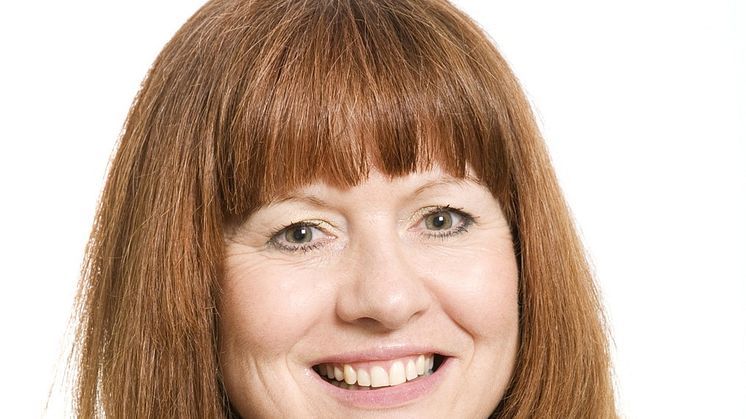
Blog post -
PR and marketing tips for small businesses
Dee Blick is the Director of Marketing Gym as well as a writer, blogger and fellow of the Chartered Institute of Marketing. She gives her advice on marketing and PR for small businesses.
Can you tell me a little about yourself and what you do?
I’m a fellow of the Chartered Institute of Marketing with 30 years marketing experience. I do 3 things, I work with SMEs - I help them with their marketing planning and implementation, I’m also a professional speaker which I do on behalf of brands, and thirdly, I'm a writer. I write marketing books which are sold all around the world and I’m a marketing blogger, which I do for brands as well as myself.
That’s impressive, how do you manage to fit so much in?
The way I look at is you only have so many productive years and I love what I do, it’s just so natural to me. If you love what you do then it doesn’t feel like work.
What would you say is the main difference between marketing and PR?
While I believe they are separate disciplines with their own skill sets, if you relate this to SMEs the lines are increasingly blurred. I think small businesses would see it as a melting pot of disciplines while global brands may have a more clear cut definition.
For SMEs their focus is to communicate the right message to the right audience whether they be journalists, bloggers or a potential customer, and it’s about crafting content which will appeal to them.
In the small business world marketers are increasingly having to adopt PR skills. I mean if you look at myself, I’m a marketer who happens to be a writer and I often communicate with journalists. The rules, as well as the game, are changing.
Could you give me your top tips for SMEs?
The main problem I’ve noticed with SMEs is that they dive into tactics and focus on one off hits, they don’t join up the dots. These are my four tips for them:
1. A business must do an audit of all the benefits that they’re offering.
This sounds really obvious but it’s amazing how many don’t do this. They also need to involve their clients and their employees in this. From this they need to develop their positioning statement.
This is crucial as so many small businesses fall into what I call “cut and paste-itis.” They go to their About Us page and condense that down into their positioning statement instead of taking the opportunity to sit down and think before communicating all the great thing that their business has to offer.
Then when they network at events, pitch to clients, develop an advertising campaign etc, they have a summary of everything they’re good at.
When I do this with my clients I end up with at least 3 or 4 sides of A4 then I ask the directors to tick off all the things that they’re saying in their marketing materials, adverts and so on. You can bet your bottom dollar that only about 10% of what they have on that paper they are revealing to the outside world.
2. They need to ask the 5 key questions.
1. Who do I want to reach?
2. What are their deep underlying needs for what I offer?
3. What are the barriers that might put them off doing business with me?
4. Where will I find them?
5. How can I build campaigns to communicate with them?
The answers to these will help them build targeted, relevant campaigns.
3. Remember the ‘Continuum of Behaviour’
This is the decision making process that a prospect goes through before buying.
There are 5 stages to this:
-awareness
-interest
-evaluation
-desire
-action
Most small businesses think “Oh my god, I must get that cold prospect, who hasn’t got a clue who I am, into a paying customer in one step.” You can’t do that. You must plan campaigns along those 5 stages. That’s pivotal whether you’re a global brand or a small business.
You must stop thinking in terms of one off hits and join up the dots in your campaigns, moving your prospect along the continuum. If people want to buy, they have to be persuaded over a period of time and build their trust in you. You must create content which is relevant to each step in the continuum so that you’re not over saturating your prospect with too much information at the one time.
4. Get great quality data
Always get your data from a reliable source such as a direct marketing association. If you’re going to build prospect lists using data then make sure it’s the best you can get with at least a 98% deliverability guarantee.
How important do you think content is for SMEs?
It’s absolutely crucial. For me, less is more. There is too much poor quality content being spammed out. It’s more important to create exquisitely produced content targeted to your audience than huge volumes of non targeted, meaningless content. We must create content which is worthy of people reading and acting on.
Can you give me your favourite examples of low budget marketing campaigns that have created a big buzz?
I thought I’d give you a couple which are indicative of what I do.
A client of mine had a very small budget and he wanted to get members of the media to his exhibition stand as well as encouraging their readers to do so as well.
So what I did was send two press releases. One of which was entitled “Please do not release, for your attention only” and made it so that it was only to be seen by the editors of each publication.
It spoke about what would be on the stand but also invited them to pick up their own “exhibition survival goody bag.” I put this together with chocolates, really good quality bath foam and various bits and pieces. We got 3 key members of the media who rocked up to his stand and 2,000 other people who passed through the exhibition.
The editors loved that we’d sent a press release only for them so when we sent them the next press release for their customers, 100% of the publications we targeted covered our story did.
I’ve always taken the quirky approach and it always works.
The second was a direct mail campaign for a small business who wanted to build relationships with 5 key decision makers. They tried various tactics but with no success. So what I did was write a letter to each of them and bought them each Parker pens engraved with the initials of each person. This demonstrated how caring and attentive my client's service was.
The net result was that 3 of the decision makers contacted my client and one of them offered a 6 figure contract. It only cost about £250 to run.
What I do is stand in the shoes of the recipient and look at the landscape from their eyes. You can create a buzz on a shoestring so long as you communicate the right message to the right audience.
You recently wrote The 15 Essential Marketing Masterclasses for your Small Business, could you tell me a little about that?
It’s been endorsed by the Chartered Institute of Marketing and has been reviewed in The Sun newspaper, I think it was one of the first business books which they have reviewed, as well as the City A.M and other business magazines. It’s the sequel to The Ultimate Small Businesses Marketing Book which is still at number one in the best seller list. I can’t quite believe my books are fighting themselves for the top spot, it’s really overwhelming.




